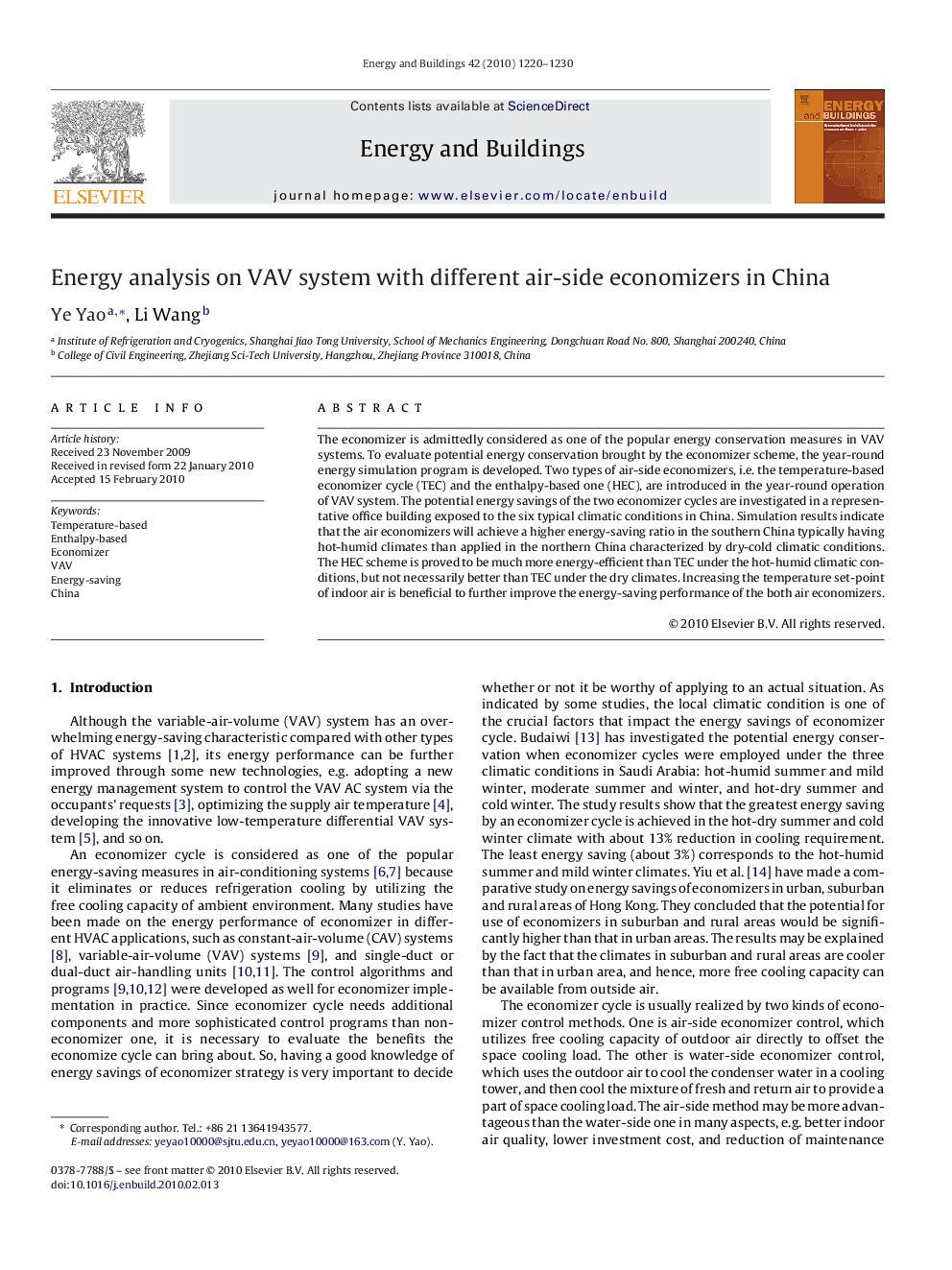| Article ID | Journal | Published Year | Pages | File Type |
|---|---|---|---|---|
| 264771 | Energy and Buildings | 2010 | 11 Pages |
The economizer is admittedly considered as one of the popular energy conservation measures in VAV systems. To evaluate potential energy conservation brought by the economizer scheme, the year-round energy simulation program is developed. Two types of air-side economizers, i.e. the temperature-based economizer cycle (TEC) and the enthalpy-based one (HEC), are introduced in the year-round operation of VAV system. The potential energy savings of the two economizer cycles are investigated in a representative office building exposed to the six typical climatic conditions in China. Simulation results indicate that the air economizers will achieve a higher energy-saving ratio in the southern China typically having hot-humid climates than applied in the northern China characterized by dry-cold climatic conditions. The HEC scheme is proved to be much more energy-efficient than TEC under the hot-humid climatic conditions, but not necessarily better than TEC under the dry climates. Increasing the temperature set-point of indoor air is beneficial to further improve the energy-saving performance of the both air economizers.
